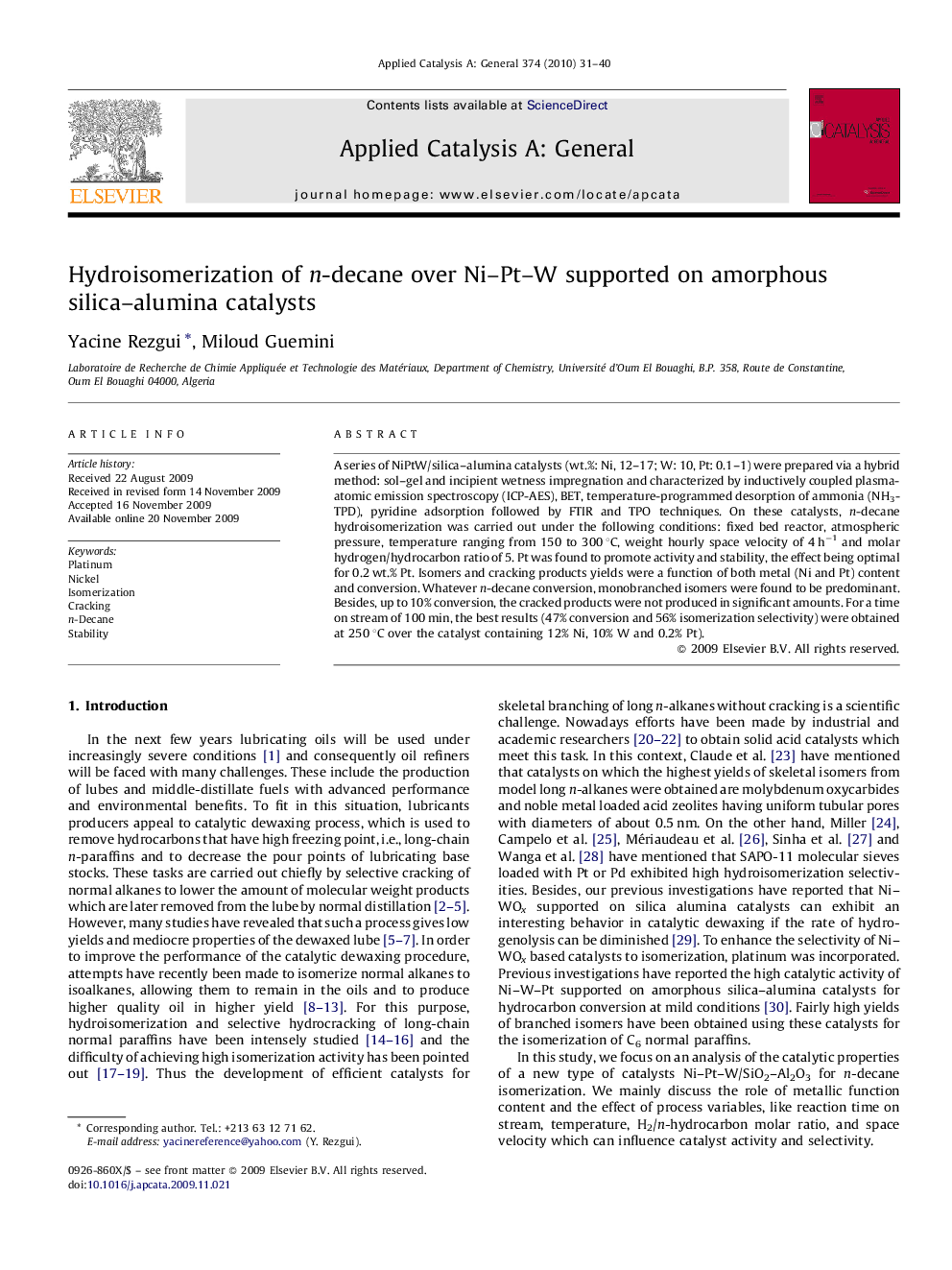| Article ID | Journal | Published Year | Pages | File Type |
|---|---|---|---|---|
| 42133 | Applied Catalysis A: General | 2010 | 10 Pages |
A series of NiPtW/silica–alumina catalysts (wt.%: Ni, 12–17; W: 10, Pt: 0.1–1) were prepared via a hybrid method: sol–gel and incipient wetness impregnation and characterized by inductively coupled plasma-atomic emission spectroscopy (ICP-AES), BET, temperature-programmed desorption of ammonia (NH3-TPD), pyridine adsorption followed by FTIR and TPO techniques. On these catalysts, n-decane hydroisomerization was carried out under the following conditions: fixed bed reactor, atmospheric pressure, temperature ranging from 150 to 300 °C, weight hourly space velocity of 4 h−1 and molar hydrogen/hydrocarbon ratio of 5. Pt was found to promote activity and stability, the effect being optimal for 0.2 wt.% Pt. Isomers and cracking products yields were a function of both metal (Ni and Pt) content and conversion. Whatever n-decane conversion, monobranched isomers were found to be predominant. Besides, up to 10% conversion, the cracked products were not produced in significant amounts. For a time on stream of 100 min, the best results (47% conversion and 56% isomerization selectivity) were obtained at 250 °C over the catalyst containing 12% Ni, 10% W and 0.2% Pt).
Graphical abstractA series of (NiPt)AC catalysts containing nickel, tungsten and platinum were prepared via a hybrid method, characterized by several techniques and tested in the hydroisomerization of n-decane. The collected data showed that after 100 min TOS, the catalyst with 12% of nickel and 0.2% platinum ((Ni12Pt0.2)AC showed the best results (47.1% of conversion and 55.6% selectivity) at 250 °C.Figure optionsDownload full-size imageDownload high-quality image (108 K)Download as PowerPoint slide
